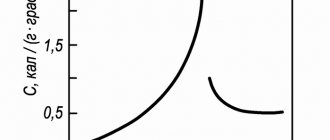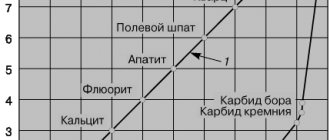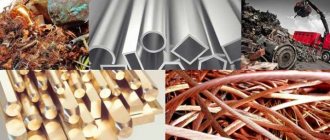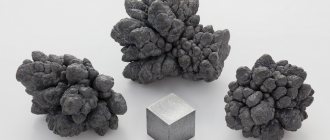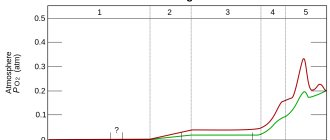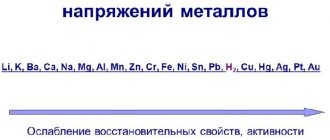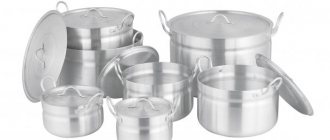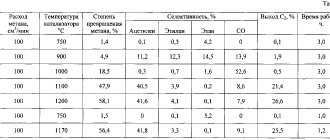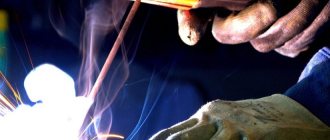Argon, properties of the atom, chemical and physical properties.
Ar 18 Argon
39.948(1) 1s2 2s2 2p6 3s2 3p6
Argon is an element of the periodic system of chemical elements of D.I. Mendeleev with atomic number 18. It is located in the 18th group (according to the old classification - the main subgroup of the eighth group), the third period of the periodic system.
Argon atom and molecule. Argon formula. Argon structure
Isotopes and modifications of argon
Properties of argon (table): temperature, density, pressure, etc.
Physical properties of argon
Chemical properties of argon. Argon interaction. Reactions with argon
Producing argon
Application of argon
Table of chemical elements D.I. Mendeleev
Argon - can it accumulate in a basement or inspection hole?
Good afternoon
Here's a question. If you use TIG welding in a garage, can Argon accumulate in the inspection pit of the garage or basement in concentrations sufficient to cause loss of consciousness?
The gas itself is inert and seems harmless, but if you breathe it, they write that breathing stops and instant death. And it is heavier than air... I remember how they were digging a well in the village - my brother came down and felt bad in just a couple of minutes. I climbed back out, but remained green for several hours. Then they lowered the air pump into the well and brought the hose from it outside. The pump worked for an hour, I climbed in - everything was fine. No one knows what kind of gases were there. But after that incident, no one climbed into the well without blowing it out with a pump. I don’t plan to cook TIG much, but I’m afraid that Argon will accumulate, I don’t want one day when I go down to the cellar to get some potatoes I lose consciousness and die. I'm more worried about others, of course. Especially if there are situations where gas takes up, say, 80 cm of volume from the floor (40 liters leaked from a cylinder overnight, for example) - you go into the garage and breathe air, and a child is 95 cm tall? That is, you won’t even understand what’s wrong, but something irreparable has already happened. Are these really possible cases in an ordinary, non-sealed garage, or are these my fears?
And it is heavier than air... I remember how they were digging a well in the village - my brother came down and felt bad in just a couple of minutes. I climbed back out, but remained green for several hours. Then they lowered the air pump into the well and brought the hose from it outside. The pump worked for an hour, I climbed in - everything was fine. No one knows what kind of gases were there. But after that incident, no one climbed into the well without blowing it out with a pump. I don’t plan to cook TIG much, but I’m afraid that Argon will accumulate, I don’t want one day when I go down to the cellar to get some potatoes I lose consciousness and die. I'm more worried about others, of course. Especially if there are situations where gas takes up, say, 80 cm of volume from the floor (40 liters leaked from a cylinder overnight, for example) - you go into the garage and breathe air, and a child is 95 cm tall? That is, you won’t even understand what’s wrong, but something irreparable has already happened. Are these really possible cases in an ordinary, non-sealed garage, or are these my fears?
“Argon is heavier than air and can accumulate in pits, wells, dead ends, displacing air. The oxygen content may drop below the limit values. Equalization of concentration due to diffusion occurs slowly and depends on volumes, geometric shapes, the flow of argon into the atmosphere, and its temperature. Argon and nitrogen are physiologically inert, non-toxic gases. By replacing oxygen in the air and displacing oxygen from the body, they act on humans as suffocating agents (asphyxants) due to a decrease in the partial pressure of oxygen.
When the oxygen content in the atmosphere slowly decreases to a level that can be briefly tolerated by the body (5-7%), symptoms are detected: • increased breathing and heart rate, the breathing rhythm can be wave-like (periods of increased breathing are followed by periods of slowing);
• loss of balance, dizziness, possible euphoria;
• a feeling of heaviness or squeezing in the frontal part of the head;
• knocking in the temples;
• feeling of heat throughout the body;
• tingling sensation in the tongue, tips of the fingers and toes;
• difficulty speaking;
• progressively (possibly quickly) decreasing physical performance, loss of coordination;
• changes in the perception of the environment and inhibition of the function of the senses, especially touch;
• memory lapses and loss of consciousness are possible.
Symptoms may appear depending on a person’s individual predisposition to the effects of hypoxia.
With a sharp decrease in oxygen content in the atmosphere and, especially if a person accidentally enters the environment of nitrogen or argon, a few breaths are enough to reduce the partial pressure of oxygen in the blood to a critical level - loss of consciousness occurs, almost always suddenly.
There is no difference in the impact of argon or nitrogen on a person when they completely displace oxygen from the atmosphere.
When inhaling a hypoxic, but tolerated by the body, mixture of air with argon, unlike nitrogen, a weak narcotic effect of argon may individually manifest itself, expressed by slight euphoria.
But this has no fundamental significance regarding the threatening danger.” Modified on February 5, 2015 by -Dmitry-
Argon atom and molecule. Argon formula. Argon structure:
Argon (Latin Argon, from ancient Greek ἀργός - “lazy, slow, inactive”) is a chemical element of D. I. Mendeleev’s periodic system of chemical elements with the designation Ar and atomic number 18. Located in the 18th group (according to old classification - the main subgroup of the eighth group), the third period of the periodic table.
Argon is the lightest element of D.I. Mendeleev’s periodic table of chemical elements from the group of inert (noble) gases.
Argon is a chemically inert non-metal. Chemically inactive.
As a simple substance argon (chemical formula Ar) under normal conditions is a monatomic gas without color, taste or smell.
The argon molecule is monatomic.
Chemical formula of argon Ar.
The electronic configuration of the argon atom is 1s2 2s2 2p6 3s2 3p6. The ionization potential (first electron) of the argon atom is 1520.57 kJ/mol (15.7596117(5) eV).
Structure of the argon atom. The argon atom consists of a positively charged nucleus (+18), around which 18 electrons move in three atomic shells. In this case, 10 electrons are in the internal level, and 8 electrons are in the external level. Since argon is located in the third period, there are only three shells. First, the inner shell is represented by the s-orbital. The second – the inner shell is represented by s- and p-orbitals. The third - outer shell is represented by s- and p-orbitals. The outer energy level of the argon atom is completely complete - 8 paired electrons. Therefore, argon is chemically inactive. In turn, the nucleus of an argon atom consists of 18 protons and 22 neutrons. Argon belongs to the elements of the p-family.
The radius of the argon atom (calculated) is 71 pm.
The atomic mass argon atom is 39.948(1) a. eat.
Argon is the third most abundant component of air after nitrogen and oxygen; its average content in the Earth's atmosphere is 0.934% by volume and 1.292% by mass. Argon is the most common inert gas in the earth's atmosphere.
Argon, properties of the atom, chemical and physical properties
Where and how is argon mined?
Pure argon is obtained exclusively from air using liquefaction from the so-called “Linde process”. This process consists of smooth liquefaction of air to a temperature of 77 - 100K. As the temperature decreases, the gases alternately turn into a liquid state (depending on the melting point) and are subject to collection. To separate argon on an industrial scale, so-called “distillation columns” are used. They make it possible to obtain the so-called “raw argon”, which contains oxygen impurities in a volume of 3 - 5% and nitrogen in a volume of up to 1%.
The raw argon is then purified in subsequent stages. The gas mixture is first heated to room temperature and compressed to 4 - 6 bar. To remove the remaining oxygen, hydrogen is introduced, which reacts with oxygen to form water on precious metal catalysts. Once this has been done, the argon that accumulates at the bottom end of the column is separated from the remaining nitrogen. The output can be a noble gas with a purity of 99.9999%. Other methods of producing argon involve collecting it during the production of other chemicals. For example, in the production of ammonia, argon is a byproduct of the chemical reaction.
Read: Sulfur as a chemical element on the periodic table
Properties of argon (table): temperature, density, pressure, etc.
Detailed information on the website ChemicalStudy.ru
| 100 | General information | |
| 101 | Name | Argon |
| 102 | Former name | |
| 103 | Latin name | Argon |
| 104 | English name | Argon |
| 105 | Symbol | Ar |
| 106 | Atomic number (number in table) | 18 |
| 107 | Type | Non-metal |
| 108 | Group | Inert (noble) gas |
| 109 | Open | William Ramsay, John William Strett (Lord Rayleigh), UK, 1894 |
| 110 | Opening year | 1894 |
| 111 | Appearance, etc. | An inert gas without color, taste or smell |
| 112 | Origin | Natural material |
| 113 | Modifications | |
| 114 | Allotropic modifications | |
| 115 | Temperature and other conditions for the transition of allotropic modifications into each other | |
| 116 | Bose-Einstein condensate | |
| 117 | 2D materials | |
| 118 | Content in the atmosphere and air (by mass) | 1,292 % |
| 119 | Content in the earth's crust (by mass) | 0,00015 % |
| 120 | Content in seas and oceans (by mass) | 0,000045 % |
| 121 | Content in the Universe and space (by mass) | 0,02 % |
| 122 | Abundance in the Sun (by mass) | 0,007 % |
| 123 | Content in meteorites (by mass) | |
| 124 | Content in the human body (by weight) | |
| 200 | Properties of the atom | |
| 201 | Atomic mass (molar mass) | 39.948(1) a. e.m. (g/mol) |
| 202 | Electronic configuration | 1s2 2s2 2p6 3s2 3p6 |
| 203 | Electronic shell | K2 L8 M8 N0 O0 P0 Q0 R0 |
| 204 | Atomic radius (calculated) | 71 pm |
| 205 | Empirical atomic radius | |
| 206 | Covalent radius* | 106 pm |
| 207 | Ion radius (crystalline) | |
| 208 | Van der Waals radius | 188 pm |
| 209 | Electrons, Protons, Neutrons | 18 electrons, 18 protons, 22 neutrons |
| 210 | Family (block) | p-family element |
| 211 | Period in the periodic table | 3 |
| 212 | Group on the periodic table | 18th group (according to the old classification - the main subgroup of the 8th group) |
| 213 | Emission spectrum | |
| 300 | Chemical properties | |
| 301 | Oxidation states | 0 |
| 302 | Valence | 0 |
| 303 | Electronegativity | 4.3 (Pauling scale) |
| 304 | Ionization energy (first electron) | 1520.57 kJ/mol (15.7596117(5) eV) |
| 305 | Electrode potential | 0 |
| 306 | Electron affinity energy of an atom | 0 kJ/mol |
| 400 | Physical properties | |
| 401 | Density* | 0.001784 g/cm3 (at 0 °C and other standard conditions, the state of matter is gas), 1.3954 g/cm3 (at a boiling point of -185.848 °C and other standard conditions, the state of matter is liquid), 1.65 g/cm3 (at -233 °C and other standard conditions , state of matter - solid) |
| 402 | Melting temperature* | -189.34 °C (83.81 K, -308.81 °F) |
| 403 | Boiling temperature* | -185.848 °C (87.302 K, -302.526 °F) |
| 404 | Sublimation temperature | |
| 405 | Decomposition temperature | |
| 406 | Self-ignition temperature of a gas-air mixture | |
| 407 | Specific heat of fusion (enthalpy of fusion ΔHpl)* | 1.18 kJ/mol |
| 408 | Specific heat of evaporation (enthalpy of boiling ΔHboiling)* | 6.53 kJ/mol |
| 409 | Specific heat capacity at constant pressure | |
| 410 | Molar heat capacity* | 20.85 J/(K mol) |
| 411 | Molar volume | 24.2 cm³/mol |
| 412 | Thermal conductivity | 17.72 10-3 W/(m K) (at standard conditions ), 0.0164 W/(m K) (at 300 K) |
| 500 | Crystal cell | |
| 511 | Crystal grid #1 | |
| 512 | Lattice structure | Cubic face centered |
| 513 | Lattice parameters | 5.260 Å |
| 514 | c/a ratio | |
| 515 | Debye temperature | 85 K |
| 516 | Name of space symmetry group | Fm_3m |
| 517 | Symmetry space group number | 225 |
| 900 | additional information | |
| 901 | CAS number | 7440-37-1 |
Note:
206* The covalent radius of argon according to [1] is 106±10 pm.
401* The density of argon according to [3] and [4] [Russia] is 0.0017839 g/cm3 (at 0 °C /20 °C and other standard conditions , the state of the substance is gas).
402* The melting point of argon according to [3] and [4] is -189.35 °C (83.8 K, -308.83 °F) and -189.6 °C (83.55 K, -309.28 °F) respectively.
403* The boiling point of argon according to [3] and [4] is -185.85 °C (87.3 K, -302.53 °F) and -185.9 °C (87.25 K, -302.62 °F) respectively.
407* The specific heat of fusion (enthalpy of fusion ΔHmelt) of argon according to [3] and [4] is 7.05 kJ/mol and 1.19 kJ/mol, respectively.
408* The specific heat of evaporation (enthalpy of boiling ΔHboil) of argon according to [3] and [4] is 6.45 kJ/mol and 6.51 kJ/mol, respectively.
410* The molar heat capacity of argon [3] is 20.79 J/(K mol).
Application
Argon is widely used as an inert gas in the production of electric lamps; when welding, cutting and melting active and rare metals and alloys based on them; in metallurgical processes. To fill electric incandescent lamps, technical argon is used, which is a mixture of 85% argon and 15% nitrogen. The use of this mixture, which has a high density and low thermal conductivity, ensures a long service life of the metal filament in the light bulb. When electric arc welding of stainless steels, aluminum, magnesium and titanium alloys, argon is used as a shielding gas to protect the molten metal from oxidation by atmospheric oxygen. In an argon jet you can weld thin-walled products and metals, cut thick sheets of refractory metals. When welding in an argon environment, there is no need for fluxes and electrode coatings, and, accordingly, there is no need to clean the seam from slag and flux residues. In the production of rare, easily oxidized metals - titanium, tungsten, zirconium, semiconductor materials, in the nuclear and chemical industries, argon is used as a protective inert medium. In the food industry, argon is used as a food additive (E938), packaging gas, and also as a propellant (an inert chemical that provides excess pressure in the aerosol can and expels the active composition from the packaging).
Where is argon gas used?
This element has a fairly wide scope of application. Below are the main areas of its use:
- filling the internal cavity of incandescent lamps and double-glazed windows;
- displacement of moisture and oxygen for long-term storage of food products;
- extinguishing agent in some fire extinguishing systems;
- protective environment during the welding process;
- plasma-forming gas for plasma welding and cutting.
In welding production, it is used as a protective medium in the process of welding rare metals (niobium, titanium, zirconium) and their alloys, alloyed steels of various grades, as well as aluminum, magnesium and chromium-nickel alloys. For ferrous metals, as a rule, a mixture of Ar with other gases is used - helium, oxygen, carbon dioxide and hydrogen.
Type of protective environment during the welding process created by argon
Being heavier than air, the argon jet reliably protects the metal during welding. The inert gas provides protection for a molten and heated metal surface for a long time. Read more about the welding process using an argon protective environment in the article: argon welding - technology and operating modes of equipment.
